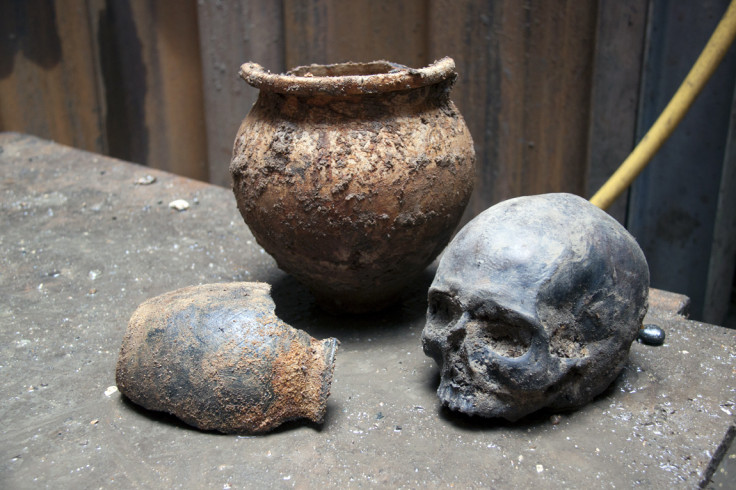London's 'Crossrail skulls' could be executed rebels of the Roman Empire

Chief archaeologist at Crossrail, Jay Carver, suggests that heads found while building London's new train line may have been hung from trees as grotesque war trophies. A new TV documentary Secret History: The Mystery Of The Crossrail Skulls, reveals that there could be as many as 6,000 skulls buried under London's buildings.
Other explanations include that these remains are those of gladiators who fought and were killed in the London amphitheatre, according to osteologist Dr Rebecca Redfern at the Museum Of London. These are many various explanations for the reason why so many skulls have been found but they do not contradict each other, says Crossrail's Jay Carver.
"It does seem quite bizarre," he admits, "but we've got all these natural and human actions going on. "It's certain that remains were being moved around by water, because we've found disturbed graves nearby that have been affected by flood waters.
"But at London Wall, the skulls were deposited by human hands, with no evidence there of erosion. And on the Crossrail site, we've got beheaded individuals and you can't ignore that either."

Recent excavations have found a huge Roman fort in north London, the size of eight football pitches – large enough to hold 1,500 troops. The presence of this garrison changes what was previously believed about Londinium, the Latin name for London. Londoners did not live under peaceful occupation by the Romans, but endured fearsome military rule, believes Dr Dominic Perring from University College London.
The Roman legions were conscripted from all over the world, including the conquered tribes such as the Celtic warriors of Gaul and Germania. The Celts had a reputation as head hunters and would decapitate their enemies. After a battle against British rebels, they might have strung their heads from branches along the road into London, perhaps as a dire warning.
"There is a long-standing northwest European concern with heads, and this allows it to be argued that the Walbrook skulls were part of this wider and longer-standing interest," Perring said in a Telegraph report.
© Copyright IBTimes 2025. All rights reserved.






















